In our Rayonier Graduates series, we’re talking to recent Forestry College graduates who now work for Rayonier. In this story, Oregon Forester Vanessa McKinney shares how she became a forester, her love for forest photography, and her hope of inspiring more women to work in the industry.
NORTH BEND, Oregon—Vanessa McKinney follows her dog through thick forestland.
They use the same natural paths wild animals have made, knowing the elk and bears have a sense for the safest route. Vanessa draws in a deep breath of fresh air and smiles: she gets paid to be here, tromping through the woods just like she did as a child.
There are treasures all around her: a robin’s nest with beautiful blue eggs waiting to hatch; a snail slithering down a branch; a rare wildflower beginning to bloom.
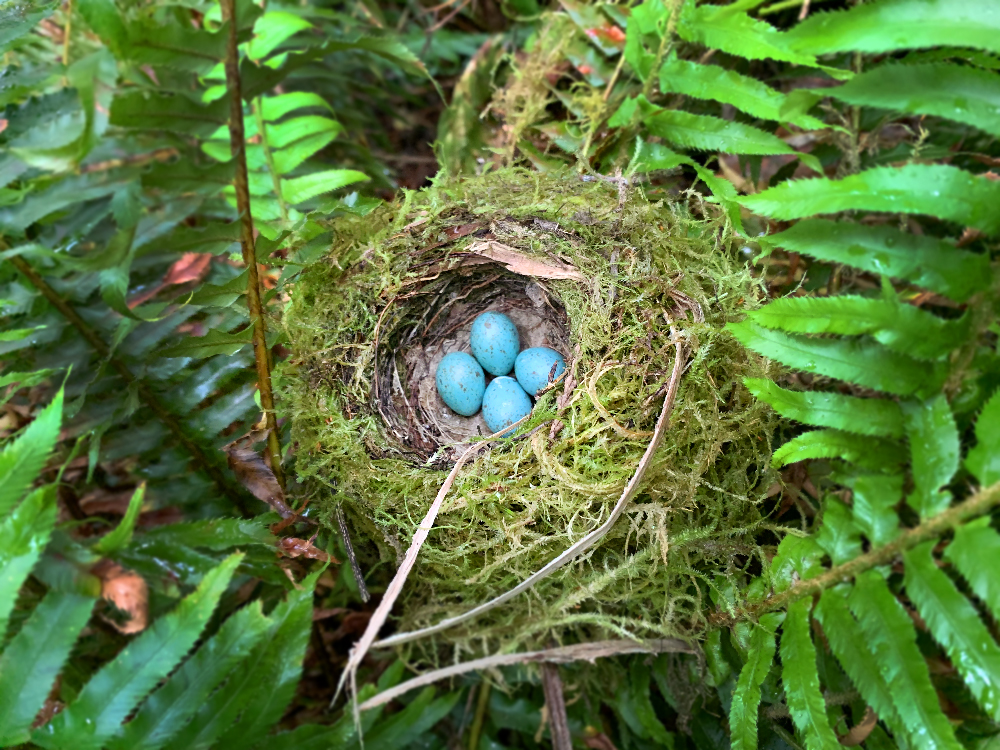
She just can’t help pulling out her iPhone to snap a picture before carrying on with her work in one of Rayonier’s Oregon tree farms, and no one faults her for that: her photography offers a whole new view of forests that grow for decades with almost no human contact.
“I get to venture out to places that only I will see and touch for years to come,” says Vanessa, a technical forester. “I love being the boots on the ground and the eyes in the forest for Rayonier.”
She is here today to measure a plot of trees. It’s how a timber company keeps an “inventory” of its forests, tracking how fast the trees are growing to ensure a steady, perpetually sustainable supply of both habitat and timber.
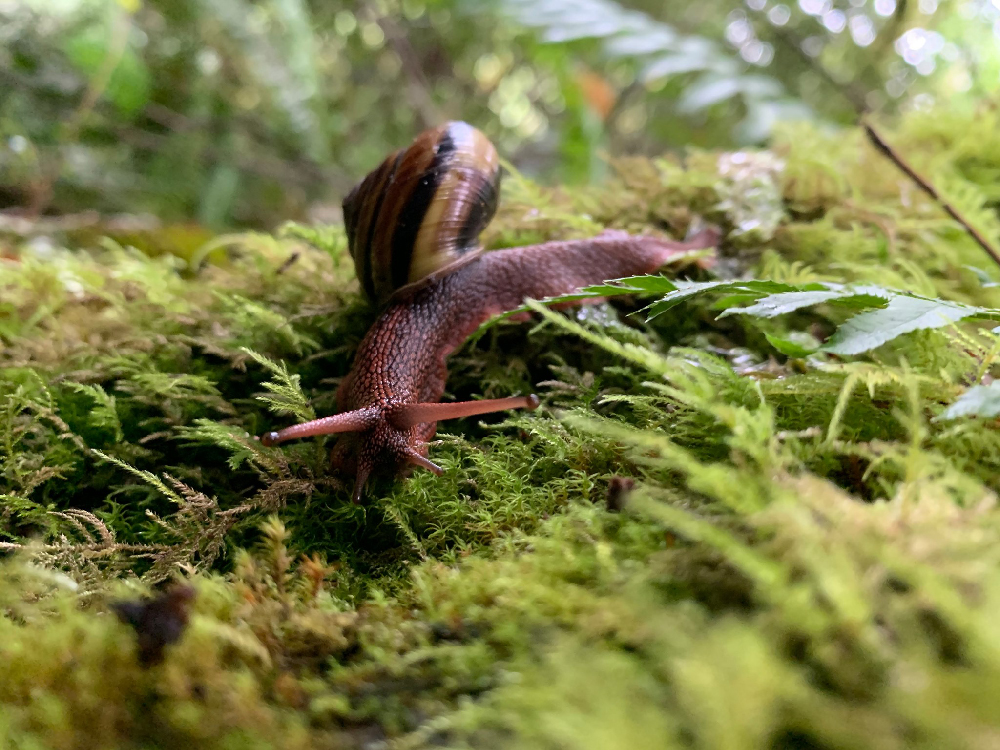
Choosing a Career in Forestry
Vanessa has always been drawn to nature. While friends might prefer the mall, she was more likely to navigate her way through the woods than crowded stores. In fact, she admits, she can easily get lost in a crowd. But with her GPS and her intuition as a guide, she can find any plot point in a dense forest.
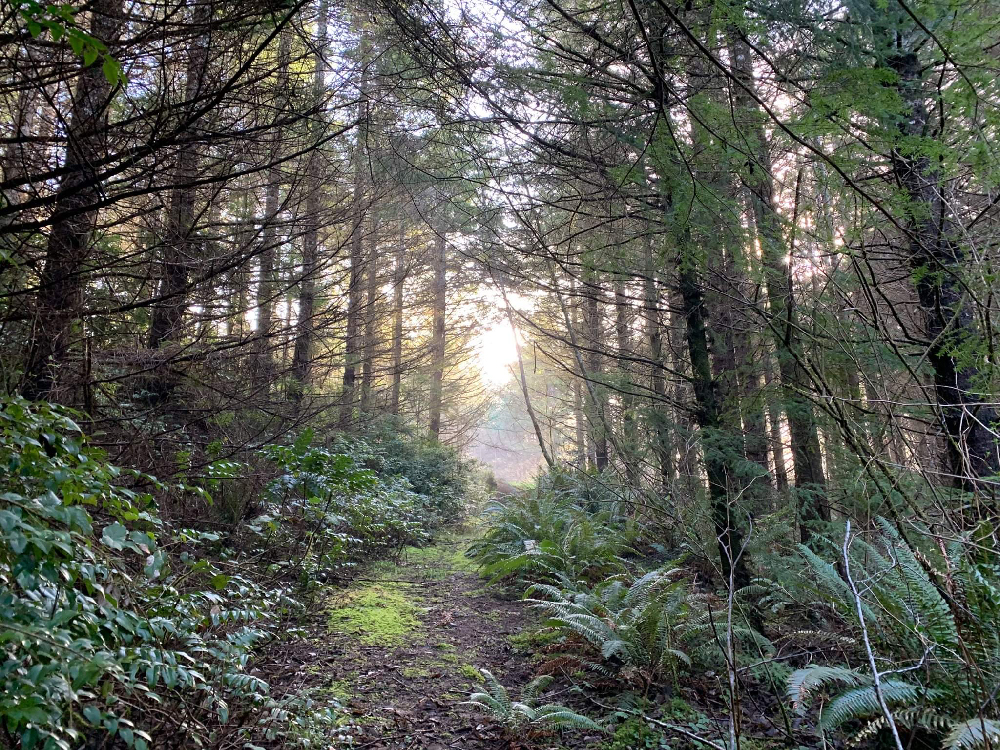
She grew up in Eureka, California, known for its majestic redwoods. At an early age, she had an appreciation for renewable resources, and she wanted a career that would give her a role in protecting them.
It wasn’t long after she started college that she found herself drawn to forestry.
“In forestry, the core is that you care for the land and you care for people. I wanted to be a part of that,” she says.
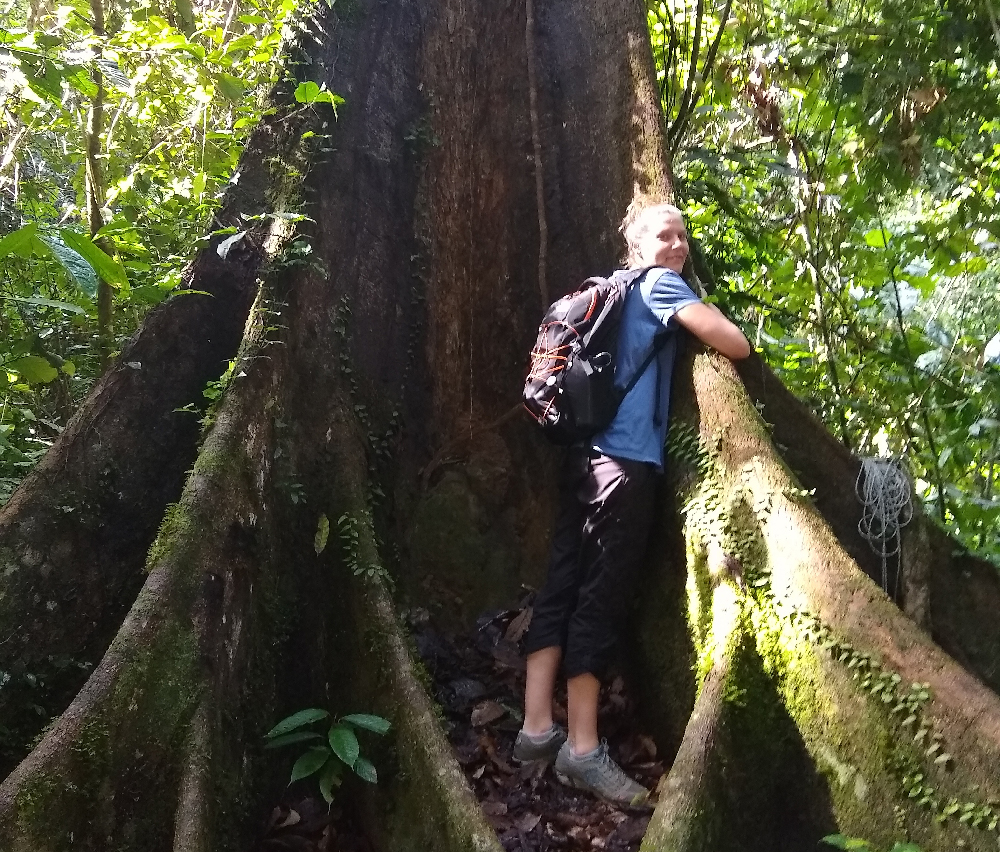
Studying Forestry at Oregon State University
Vanessa was delighted to find herself studying outdoors more than in the classroom while she pursued a degree in forestry, natural resources and conservation at Oregon State University.
The work was challenging, but rewarding.
“You’re put in situations that aren’t a casual walk down the street, so you learn a lot about yourself,” she says.
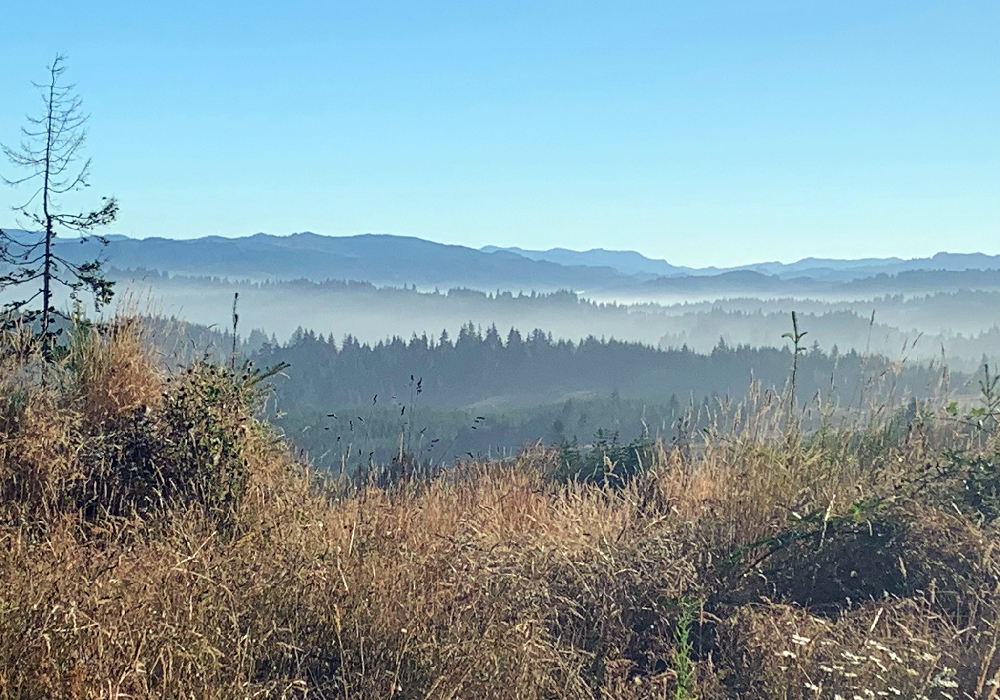
“There were times I wondered, ‘Am I going to make it? Am I ever going to understand this math?’ There’s a lot of satisfaction when you overcome those challenges.”
During her studies, she helped OSU open a greenhouse, researched forest fires and droughts, and confirmed that forestry was her destiny.
Forestry on the Other Side of the World
After college, Vanessa’s love of forestry took her even further: to the other side of the world. A nonprofit called Kopel had chosen her for an internship replanting trees on an island that had been devastated by fire in Malaysia.
“Trees are different from state to state and even county to county here in the U.S.,” Vanessa says. “In another country, it was really different. We had to come up with a way to reforest a marshy island in tropical conditions.”
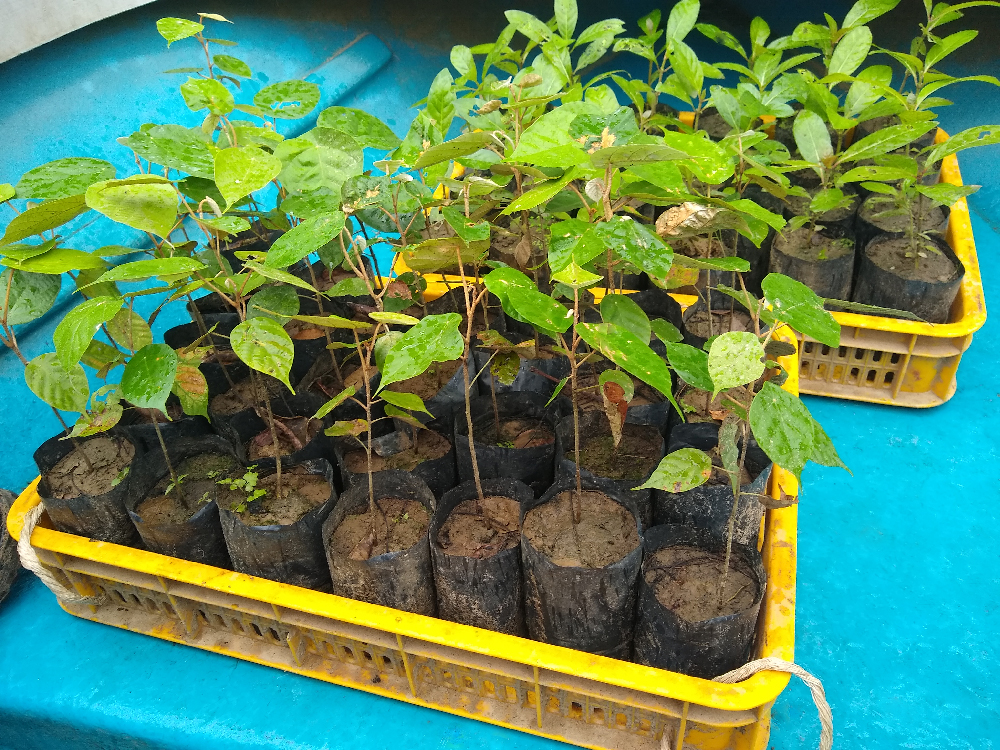
Vanessa cherished the experience, which required her to live in a treehouse, eat with her hands, and “shower” using a pan of rainwater collected during a tropical storm. She returned to the U.S. with a new appreciation for modern forestry and for her own abilities. Vanessa joined the Rayonier team soon after in the fall of 2019.
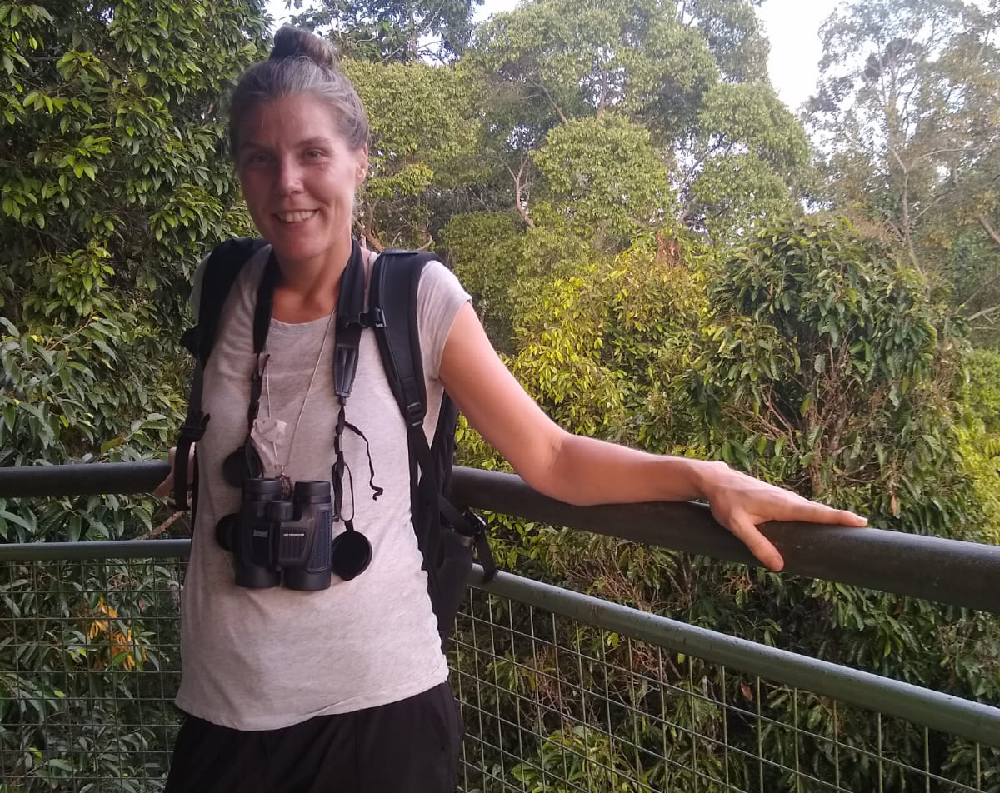
“My Dog is My Partner in the Woods”
Tasked with managing tree farms on what are often rough, mountainous properties near Oregon’s coast, Vanessa took her new coworkers’ advice and adopted a dog. She chose a Dutch Shepherd and named him Cruiser. It was a fitting name, as they would cruise timber together most days of the week.
Cruising timber is an essential practice in forest management. By measuring specific plots of trees, our foresters are able to estimate the wood volume of entire forests. Our company uses that data to form an overall inventory that guides our decisions. Watch a video of a forester cruising in our article, Why do Foresters “Cruise” Timber?
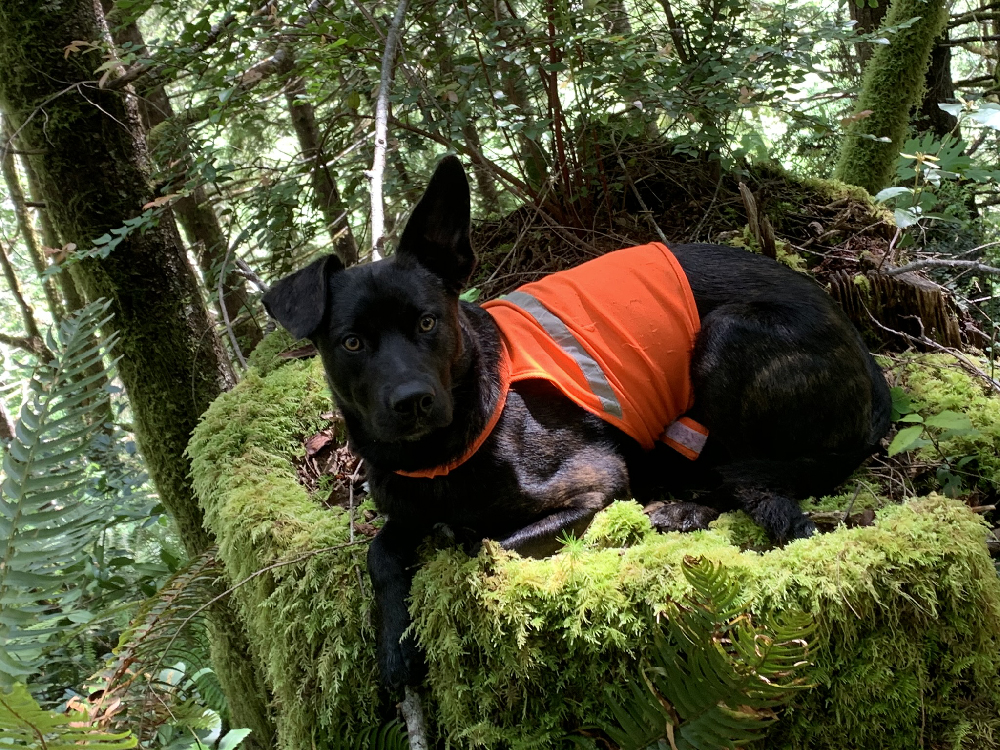
She trained Cruiser to assist her in the woods, helping her navigate through thick areas, alerting her to danger and even keeping deer off the road.
“He turns into a different dog when he’s in the forest. He can point, tell me to stop if something’s not right. He can smell things and find things that I can’t,” Vanessa says. “He’s a huge relief. He’s my partner.”
Once, while working in the forest, Cruiser alerted Vanessa to a swarm of hornets that was headed straight for them. Thanks to that warning, Vanessa was able to run and escape the swarm without a single sting.
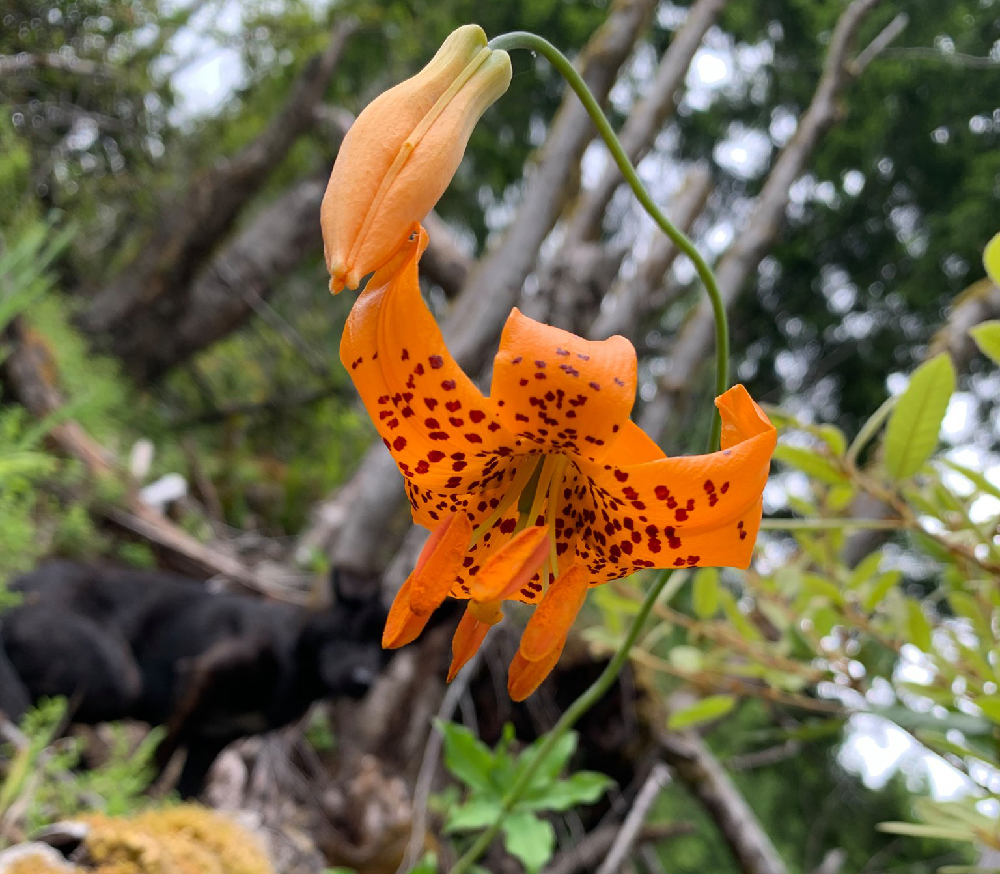
Forest Photography
Vanessa had been with Rayonier for about six months when she decided to show coworkers some photos she had taken in the woods. Soon, she had fans from Florida to Washington who couldn’t wait to see her artistic, closeup shots of wild plants and critters and breathtaking panoramic views.
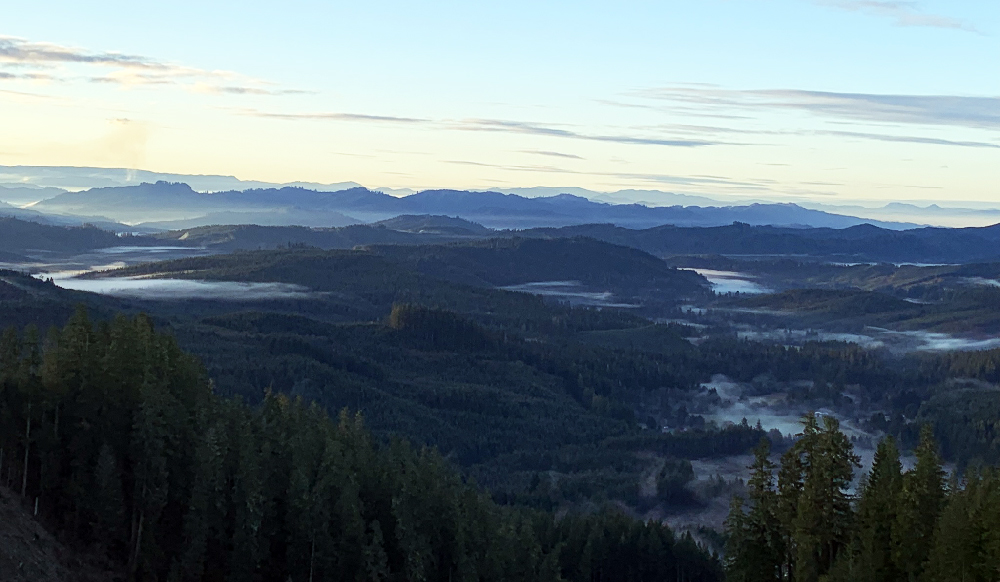
“I had no idea I was good at photography!” Vanessa says with a laugh. “I just use the iPhone Rayonier provided me. I never thought about it being a thing.”
And perhaps that’s part of what makes the photos so special: they weren’t sought out for days with high-end equipment and hundreds of shots. They’re just quick snapshots of moments in the forest that she comes across every day.
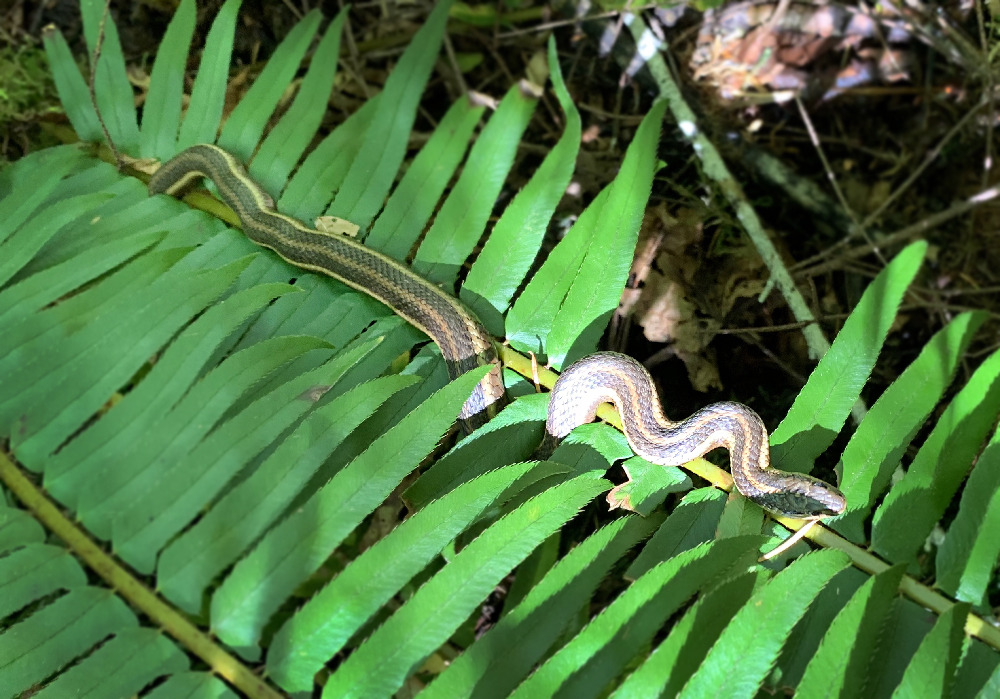
Women in the Forestry Industry
The photos are one of the ways Vanessa hopes to “do something bigger than myself” as a forester.
She’s also a member of Oregon Women in Timber, a nonprofit organization that celebrates women in the industry and strives to raise awareness about the value of forestry and forest management.
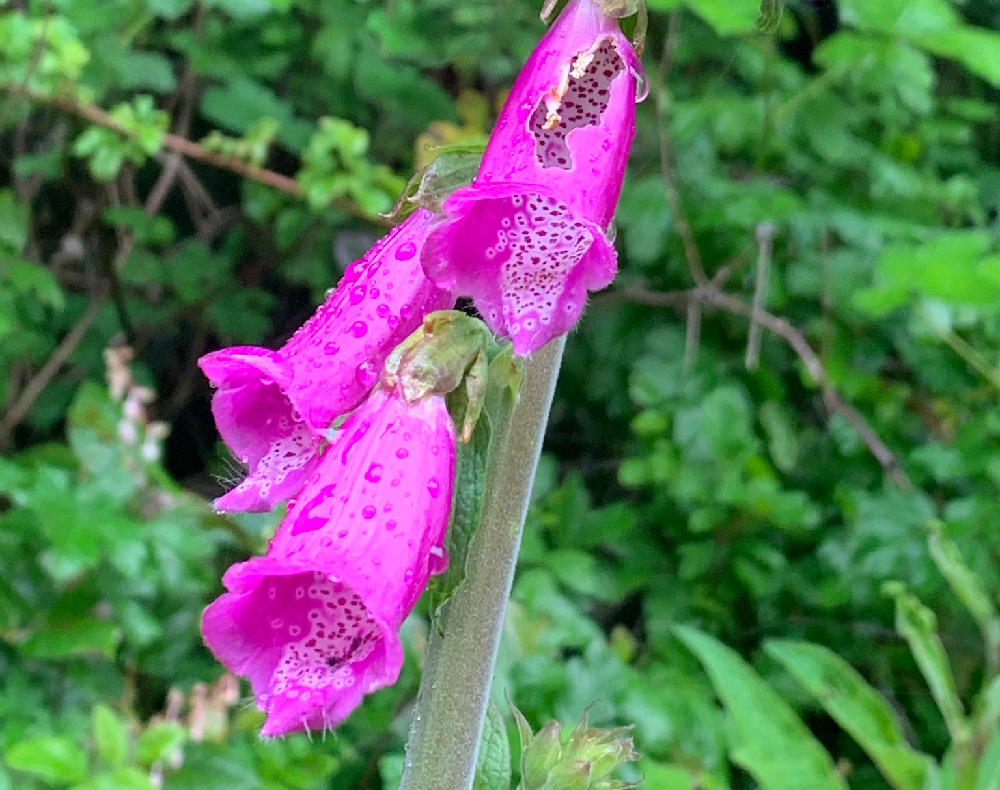
“People tend to assume our industry is male. But females have forever been a part of forestry since the Industrial Revolution,” she says.
Women traditionally don’t work at all on the Malaysian island Vanessa interned at. She showed the team there how much a female’s viewpoint can add to a forest plan.
“A woman can offer a different approach and look at things from a different perspective,” she says.
Vanessa wants to encourage and inspire other women to become a part of the forestry industry too.
“If you love being outdoors and want to play an important role in the future, this is the field for you,” she says.
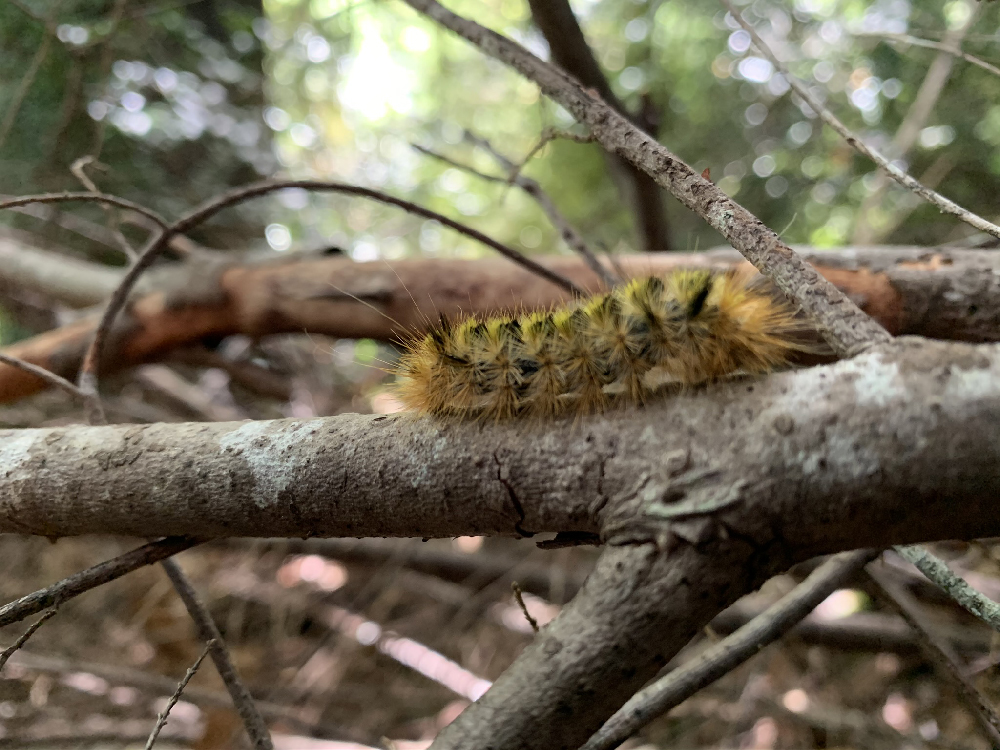
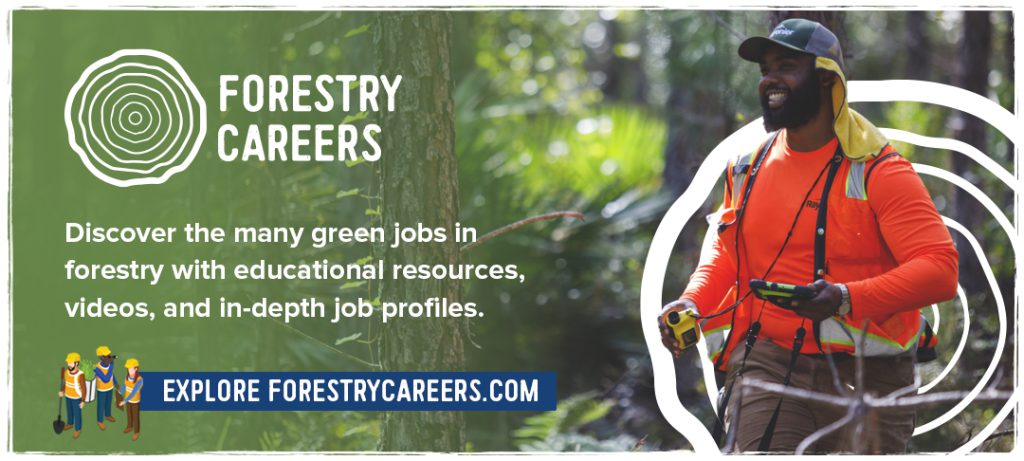







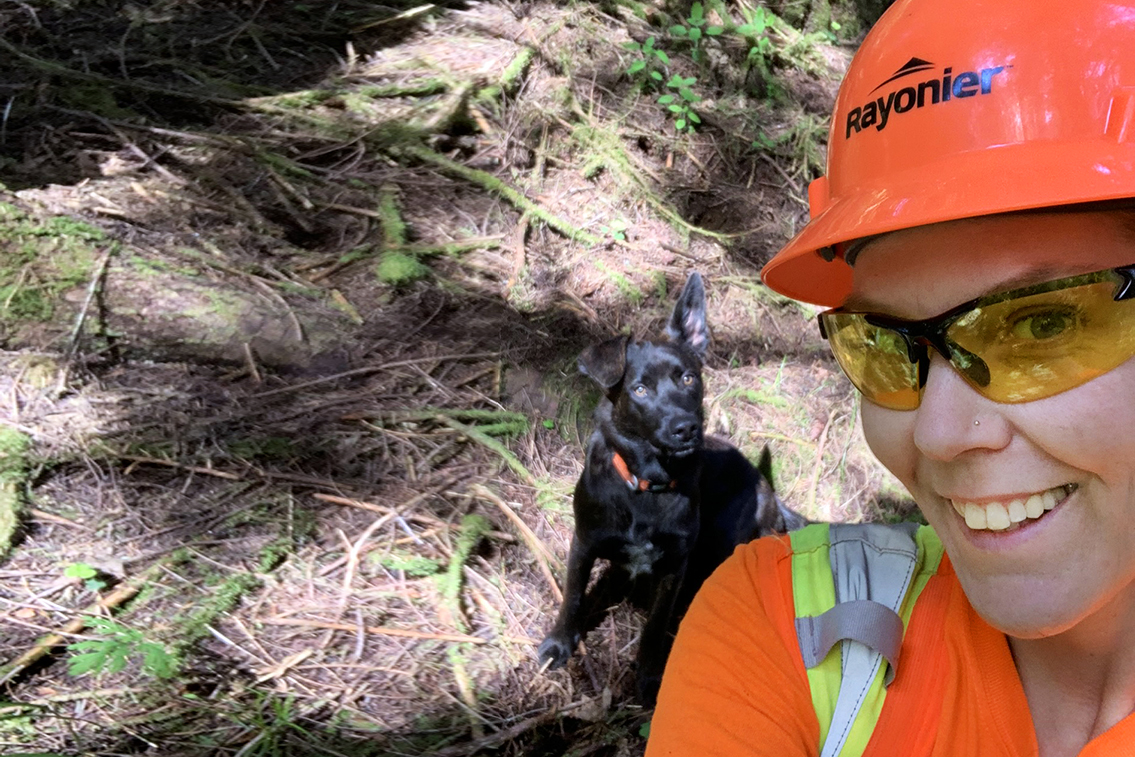


Leave a Comment